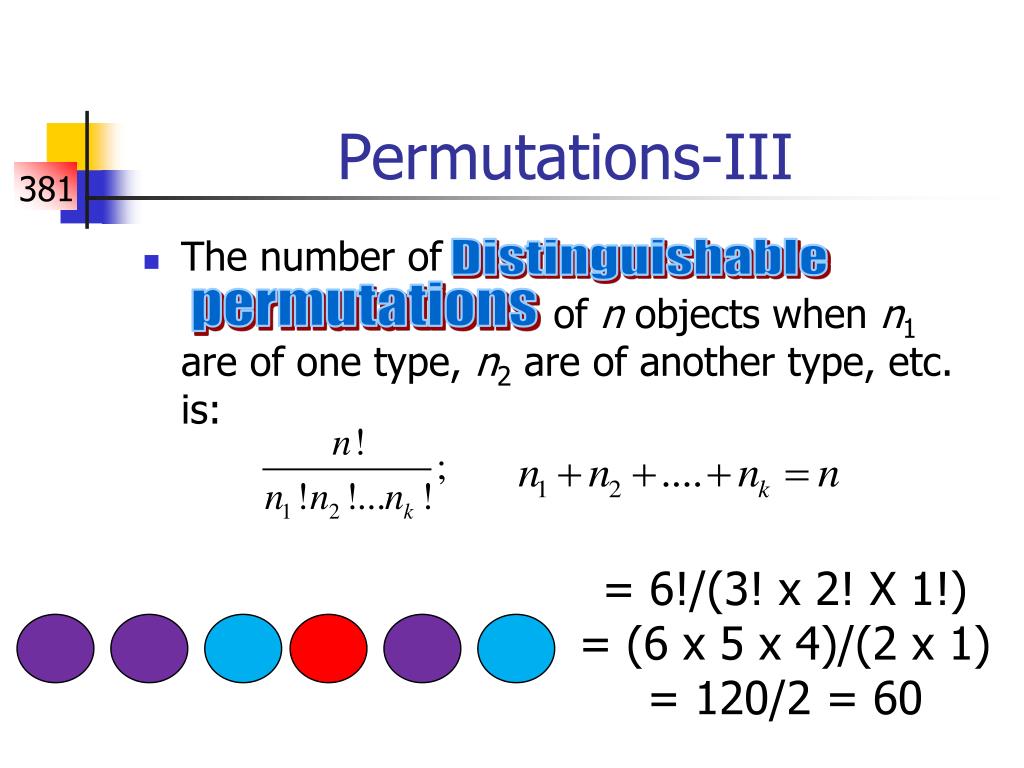

Let's say that we only have three chairs. Have these five people, but we don't have as many chairs, so not everyone is going Maybe more interesting, or maybe you might find Five factorial, which isĮqual to five times four times three times two times one, which, of course, is equal to, let's see, 20 times six, which is equal to 120. The number of permutations, permutations, of seating these five We only have one person who hasn't sat down left, For each of those, how many possibilities are there for the fifth seat? Well, one. So now there's five times four times three times two scenarios of How many people are left for seat four? Well, two people haven't sat down yet, so there's two possibilities. So now, there's five timesįour times three scenarios for seating the first three people. Now seat in seat three for each of those 20 scenarios? Well, three people haven't sat down yet, so there's three possibilities there. Five times four, we have 20 scenarios where we've seated seat one and seat two, how many people could we Now, for each of these scenarios, now, so we have 20 scenarios. So, for each of those scenarios, four different peopleĬould sit in chair two.

If we seated people in order, which we might as well do, we could say, look, five different people could sit in chair one. People in these five chairs, we could say, well, we The number of scenarios, or we could say the number of permutations of putting these five Two, position three, position four, and position five. Them in five different, let's say, positions, or chairs, so position one, position If we had five people, let's say person A, person B, person C, person D, and person E, and we wanted to put ) so we need to multiply 24 by 6 to get our answer.Ģ4*6=144 ways to arrange pencil so that "p e and n" are always next to each other !Ĭan you come up with a formula for a "n" long word where you want "x" items to be together ? :) Let's take a second and figure out what 24 actually represents, 24 is the number of ways you can arrange "pencil" with "pen" being a single letter, but we got 6 of those (pen, nep, epn. And "pencil" just became a 4 letters word, so it has 4! ways of being arranged, therefore 24 ways. Now we're doing it with 3 letters "p e and n" so there are 3! ways of arranging them, therefore 6 ways. Finally we added them together to get our answer. But really we looked at all the different ways to arrange 2 items, and there was 2! ways of doing it, so 2 ways and "pencil" was treated as a 5 letters word.

With "e" and "n" we figured out that "en" and "ne" were the only two possible way to arrange them, and treated them as a single letter. Now to dig in a little deeper what if we wanted "p e and n" to always be together ? Have a go at it before looking below :) There we go ! There are 240 different ways to arrange "pencil" so that e and n are always next to each other. First let's think about it a bit, to figure out how many ways you can arrange "Pencil" with N and E always next to one another it's going to be all the different ways to arrange "pencil" as if "en" was a single letter and the same thing with "ne"ġ) How many ways can we arrange Pencil as if "en" was a single letter?ĥ! = 120 ways, we have 5 things to arrange P c i l and "en"Ģ) Now how many ways can we arrange Pencil as if "ne" was a single letter?


 0 kommentar(er)
0 kommentar(er)
